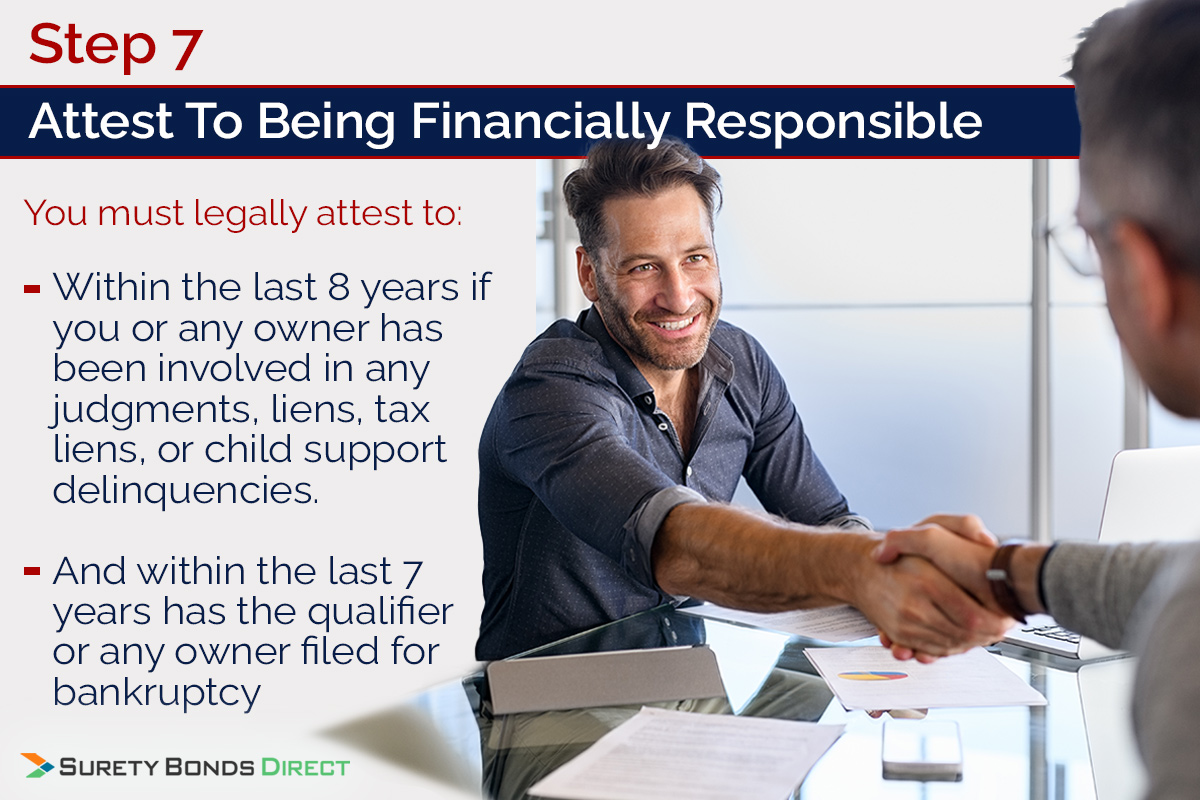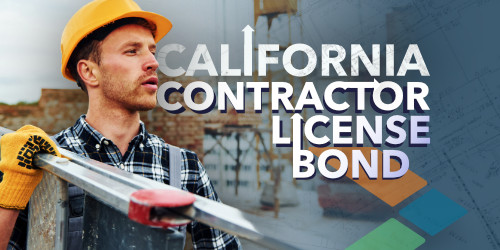Getting a Utah contractor license consists of eight major steps. However, depending on your current level of experience, you may have additional steps or requirements. Let's go over these steps so you can better understand the licensing process plus the details that the Utah Division of Professional Licensing does not explain well.
Here's what this article covers. Click on the bullet point to skip around.
- Determine your qualifier
- Choose your classification or classifications
- Complete the pre-licensing course
- Pass required examination (if necessary)
- Provide proof of experience
- Outline your business structure and ownership
- Attest to financial stability
- Provide proof of required insurance policies
- Submit your application
Step 1 - Determine Your Qualifier

A qualifier is the individual who is getting licensed and represents the license expertise. This person is the licensed professional of a business entity or the individual getting licensed as a sole proprietor.
The qualifier is responsible for all contracting work and relative decision making pertaining to performing work on projects.
A qualifier is allowed to act as a qualifier for up to 3 licensees at any one time unless:
- You show you have material authority over the businesses
- And the Division has granted written approval
If the qualifier works for a business entity and leaves, the business has up to 60 days to replace the qualifier before their license will be suspended.
Criminal Background Check
The qualifier must answer questions about having been:
- Professional disciplined while being licensed
- Having licenses revoked
- Having committed any crime (misdemeanor) or felony
If there is any history, supporting documentation must be submitted including:
- Personal accounts of the incident
- Police and court reports
- Probation or parole reports
Having a criminal history does not mean you can't have a license issued. You can learn more about the criminal guidelines and how they may impact licensure.
Step 2 - Choose Your Classifications
The Utah Division of Professional Licensing offers the following license classifications:
General Classifications
- General Engineering - E-100
- General Building - B-100
- Residential and Small Commercial - R-100
- General Electrical - E-200
- Residential Electrical - E-201
- General Plumbing - P-200
- Residential Plumbing - P201
Before a plumbing or electrical license can be applied for, the applicant must have a master level license.
Specialty Trade Classifications
- Modular Unit Installation - B200
- Residential/Small Commercial Non-Structural Remodel or Repair - R101
- Factory Built Housing - R200
- Solar Photovoltaic - S202
- Carpentry and Flooring - S220
- Masonry, Siding, Stucco, Glass, and Rain Gutter - S230
- Asphalt and Concrete - S260
- Drywall, Paint, and Plastering - S270
- Roofing - S280
- Foundation, Excavation, and Demolition - S310
- Landscape and Recreation - S330
- HVAC - S350
- Radon Mitigation - S354
- Fire Suppression Systems - S370
- Boiler, Pipeline, Waste Water, and Water Conditioner - S410
- Sign Installation - S440
- Elevator - S510
- Limited Scope - S700
The qualifier is allowed to hold 3 specialty licenses at any one time.
If the businesses needs change in the future, the qualifier is allowed to suspend one specialty license and obtain another - needed - specialty license classification.
Step 3 - Complete the Pre-Licensing Course
The qualifier must pass a pre-licensing course, meeting one of the following methods:
- A 25 hour licensing course and the 5 hour Business and Law course
- Any approved 20 hour pre-licensing course completed by the qualifier prior to November 30th, 2017.
- Any approved 25 hour pre-licensing course completed prior to July 1, 2019
- Within the last 5 years the qualifier has been a qualifier for an active and unrestricted contractor license
- The qualifier holds an accredited construction management degree
- The qualifier holds an unrestricted engineer license
The Division provides a list of pre-licensing course providers and the course typically breaks down as follows:
The 25 Hour Course
- 15 hours of financial responsibility
- 6 hours of construction best practices
- 2 hours of regulatory requirements
- 2 hours of mechanic lien fundamentals
The 5 hour course is devoted to the Utah Business and Law exam.
Continuing Education
Each license classification is required to complete 6 hours of continuing education during every two year license term.
- 3 hours must be core education
- 3 hours can be professional education related
At least 3 of the 6 hours must be attended in a LIVE class environment.
Step 4 - Pass Required Examination

There is no examination requirement except for General classifications must pass the Utah Business and Law exam.
To waive this exam requirement the qualifier must have been (one of the following):
- Identified as a qualifier on any Utah contractor license prior to May 9th 2017
- Identified as the General Classification Qualifier on a Utah license at any time
- Applying by endorsement with at least one year licensed experience in another jurisdiction
Application by endorsement means you have an active license from another state deemed equivalent by the Division.
Examples of approved states include:
- California
- New Mexico
- Florida
- South Carolina
There are more. The Division only accepts a limited number of classification from states like:
- Texas
- Washington
- Colorado
- Ohio
On your application you will find more information about applying through endorsement and a full list of these states.
Step 5 - Provide Required Proof of Experience
General classifications must have two years of paid experience in the construction industry or meet one of the following requirements:
- Affirm you have at least 4,000 hours of paid work experience in the construction industry and have the knowledge of the industry to provide for the protection of the public
- Have been a qualifier for at least 2 years on any Utah contractor license during any timeframe
- Hold a 2 or 4 year degree in Construction Management
- Hold an active and unrestricted Utah professional engineer license
- Pass the NASCLA Examination for Commercial General Building Contractors
- Apply by endorsement with one year of licensed experience working in another jurisdiction
Remember that NASCLA exams are typically transferable from one state to the next.
Step 6 - Outline Business Structure
You must outline your business structure whether it's a sole proprietorship or a legally structured business entity like:
- Partnership
- LLC
- Corporation
This includes outlining the business owners and their ownership stake.
Step 7 - Attest To Being Financially Responsible

The Division wants to ensure every contractor has the financial standing to protect the public as they accept projects.
You must legally attest to:
- Within the last 8 years if you or any owner has been involved in any judgements, liens, tax liens, or child support delinquencies.
- And within the last 7 years has the qualifier or any owner filed for bankruptcy
If you answered yes to either of these, the details of each situation must be submitted to the Division.
Based on the financial standing, the Division will determine if the contractor needs to purchase a surety bond.
What is a Surety Bond?

A surety bond or in this case a contractor license bond is a legal contractor that acts as a guarantee you will fulfill your promises and contractual obligations to your customers.
This contractor bond extends protection to a contractors customers in the event of:
- Breaking the terms of a construction contract
- Taking deposits and not starting or completing a project
- Using cheaper materials without the project owners knowledge
- Failing to pay subcontractors
- Neglecting Utah building codes
If a contractor is found guilty of any of these or similar acts, the customer can make a claim against the contractor bond for financial compensation, but only up to the bond amount.
What is Utah's Contractor Bond Amount and Cost?
The bond amount is based on:
- 30% of total liabilities in a bankruptcy scenario
- 30% of outstanding debt outside of a bankruptcy scenario
- $50,000 for a General Contractor classification (except for a R100 license)
- $25,000 for a R100 - Residential and Small Commercial license
- $15,000 for all other license classifications
The cost will be percentage of the bond amount based on a rate quoted from a surety.
And this is why you should work with Surety Bonds Direct if you want to save hundreds of dollars purchasing a contractor bond.
Learn more about Utah's contractor license bond rules and get pricing so you can make the right decision for you and your business.
Not only will we price shop for you, but you have no obligation to purchase. This is free information you can use to make the right decision for your situation.
If you have questions, you can call a bond specialist today at 1-800-608-9950.

Step 8 - Provide Proof of Required Insurance
The last step is to purchase the required liability insurance and workers compensation insurance if necessary.
For public liability insurance, you must have:
- $100,000 minimum for each incident
- $300,000 in total
If you have employees or owner workers with less than 8% of ownership, you must purchase workers compensation insurance.
We're Ready to Help If You Need To Purchase a Surety Bond

As you can see the application process isn't very complex compared to some neighboring states.
Remember there are specific rules and requirements for certain license classifications like electricians, plumbers, and elevator contractors.
If you have special circumstances, make sure you reach out to the Division.
If the Division requires you purchase a surety bond, we are ready to help you find the lowest possible pricing.
Go to our Utah contractor bond page and request your pricing.
Remember you are under no obligation to purchase once you get pricing. We'll work hard to get you the lowest possible pricing possible.





